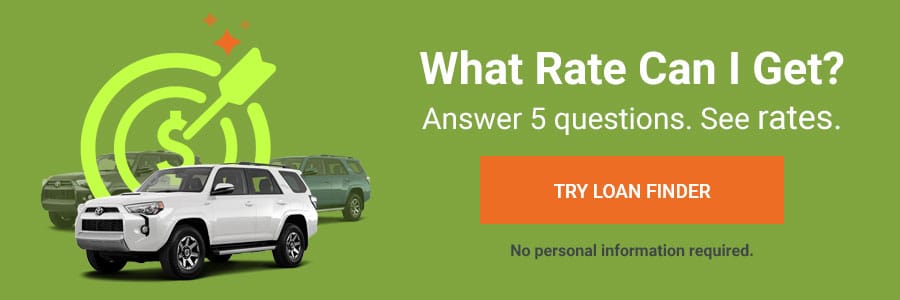Knowing the best time to trade in your car may help you squeeze the most value out of it.
As the global chip shortage kneecaps the automotive industry, car manufacturers, and several original equipment manufacturers (OEMs) have slowed down production. The narrower inventory and soaring new car prices have seen buyers explore the used car market. This might be good news if you’re looking to trade in your existing car. Or is it just?
Whether you’re looking for a better commuter car or are taking an electrifying step towards electric vehicles, a trade-in may help you use your current vehicle as part of the down payment for your new car.
And then comes another tough decision: should I do a dealer trade-in or sell privately on my own?
A dealer will process all the paperwork, work with your lender, and provide a one-stop-shop to walk in and out with a new, or new-to-you, car. On the flip side, you’ll get a higher price for your car than a dealer will pay if you sell privately.
Ultimately, getting the best deal on your car comes down to knowing the best time to trade it in. But how do you get the timing right? Let’s take a closer look at the range of considerations that will help you know the best time to trade in your car and squeeze the most value out of it.
When Should I Trade In My Car?
You can technically trade in a car at any time provided your dealer accepts it. Even so, most dealers won’t accept cars they can’t clean up and sell. Also, trading in a car early in a lease or loan agreement may not make much financial sense since you’ll need to settle the difference between what you owe and the car trade-in value.
Here are factors you should weigh to get the timing right for your trade-in.
Best time of year
Just as buyers focus on the best time of the year to purchase a car, timing a trade-in can be equally as impactful.
Usually, the first two quarters (early in the year) provide higher values for car trade-ins. This time usually has more buyers in the market and dealers need more vehicles to satisfy the pent-up demand. Also, your car may feel newer early in the year when it’s only a few weeks into a new model year rather than when it’s a few months into a new model year.
You also need to think strategically based on the car you own. For instance, the demand for AWD (all-wheel drives) will likely be higher in the fall before snow starts. A convertible may rack in a higher value as the hot season sets in. Think about when you can squeeze the most value from your car and advertise a few weeks before .
If you’re trading in to buy a new vehicle, the end of the calendar year is arguably one of the best times to do so. As manufacturers wind down production of the current model year, dealers are also scrambling to clear current inventory to create room for the coming new models. And with plenty of year-end rebates and incentives, you’ll likely get a great deal on your new purchase.
Mileage
Traditionally, lower-mileage used cars carry higher trade-in values, and for good reason. The odometer reading gives insight into how the car has been driven and how much of its useful life is left. According to the Federal Highway Administration, Americans clocked an average of 14,263 miles in 2019. You can expect an odometer reading of about 70,000 miles on a 5-year-old car.
Your car value drops with every 10,000 miles it clocks, and a huge mileage is often a red flag for a majority of buyers. Even so, an odometer reading greater than 100,000 miles doesn’t automatically kill the value of your car provided it’s in good shape.
With depreciation constant, the best mileage to trade in your car is anytime before it clocks 100,000 miles on the odometer. Lower mileage is often perceived as newer and has retained its value. And when it comes to trading in, newer will get you top dollar.
Age of the car
Once again, newer will always be better. According to Progressive, the value of a car depreciates by more than 20% after the first year of ownership, and loses about 10% of its value each following year. In five years, your car might retain as little as 40% of its original price. After five years, your car’s value will somewhat plateau, so waiting longer doesn’t make much of a difference.
Equity on the car
Equity is simply the difference between your car’s resale value and how much you owe on the auto loan. The value of your car depreciates with age, but additional factors such as repairs, accidents, or other damage can cause the value to depreciate even more. If you used an auto loan to buy the car, you might owe more on the loan than your car is worth, otherwise known as negative equity.
Not all dealers will be willing to cover the remaining balance on your auto loan if you trade in a vehicle with negative equity. Most will roll over the balance into your new car loan, so you’ll still pay it altogether. However, if you have positive equity on the car, it could be used as a down payment on a new vehicle.
Warranty status
The warranties in play may also help you decide the best time to trade in your car. Most manufacturer warranties extend to 36,000 miles or 3 years, whichever comes first. You can easily negotiate a better trade-in deal if your car is still under warranty.
When Isn’t a Good Time to Trade In My Car?
Sure, a trade-in may help you afford your next ride but there are circumstances in which trading in isn’t a good idea. Here are situations that may work against your trade-in prospects.
You have negative equity
As earlier mentioned, negative equity means that the money you owe on your auto loan is higher than the book value of your car. Negative equity is also referred to as an upside-down car loan.
For instance, if your current car is worth $20,000 and your loan payoff is $25,000, you’ll have negative equity of $5,000. You could sell the car privately and maybe get more for it than your dealer’s trade-in offer. Otherwise if you trade in a vehicle with negative equity, you’ll still be responsible for paying the balance on the vehicle you no longer own.
Car (LTV) Loan-to-Value Calculator
A loan-to-value ratio over 100% means you owe more on your loan than your vehicle is worth. An LTV over 125% can make it harder, but not impossible, to qualify for a refinance loan.
If your LTV is less than 100%, your car's value is higher than what you owe on your loan. The lower your LTV, the better.
There’s a prepayment penalty on your loan
A prepayment penalty is exactly what it sounds like — you’ll face a penalty fee if you pay off your auto loan earlier than agreed on. Be sure to read the terms and conditions on your current loan to understand whether your lender will charge a fee if you sell the car before the loan term ends.
You have a low credit score
If you’ve missed monthly payments or have taken on other debt, your credit score will be affected. Typically lower credit scores mean higher interest rates on loans. If you’re trading in to buy a new car, a higher interest rate may cancel out your potential savings. In this case, you should pause your trade-in plan and work toward building your credit.
Benefits of Trading in a Car
Here are four reasons why trading in a car is a great option.
- The car buying process is easier: Many buyers prefer trading in their current vehicle when getting a new one since the process is easy and quick. Just drive to a dealership, sign some paperwork, and drive off with a new car. Compare this to the steps you need to take when selling privately.
- You’ll finance a smaller amount: If you have positive equity on your car, you can rollover the trade-in credit to your down payment, which helps reduce the amount you need to finance.
- Tax advantages: Trading in may provide some tax advantages. In most states, you pay sales tax on the difference between your trade-in price and the vehicle you’re buying, rather than the full price of the car. This reduces your tax liability compared to selling privately.
- Save money: If you choose to sell your car privately, prospective buyers will expect it to be in the best shape. This could mean spending several hundred dollars on detailing and upgrades. Conversely, dealerships are ready to take your vehicle as-is. You’ll save money you’d have otherwise spent and could put it toward a larger down payment.


Trade-in Value vs. Selling Privately
If you’re looking to use the proceeds from your current car as part of your down payment, you probably want to compare trading it in vs. selling privately. If you’re leasing the vehicle, you’ll need to contact the lender to understand your lease termination options.
If you have the time, selling your car privately may return a bigger payout. But it could also come with the hassle of added advertising costs, coordinating test drives with prospective buyers, and risking an unsecured financial transaction.
Plan ahead by getting an estimate of your trade value online through sites like Kelley Blue Book, NADA, and Edmunds. Simply provide basic information about the vehicle, including age, condition, mileage, and location. You’ll then receive the fair market value — what you might reasonably receive if selling privately.
A trade-in will obviously save you time, but this convenience comes at the expense of a lower trade-in value. Dealerships must make a profit off your sale, so they’ll sell it for more (the retail value) than they offer you (trade-in value). Even so, they will handle all the requisite paperwork and can offer financing options for new purchases.
Know What Affects Your Trade-in Value
Knowing how factors like mileage, age, and condition affect your car’s value can help you decide on the best time to sell. If you’re using a dealer, trading in early in the year may help you maximize profits. Also, it makes more financial sense to trade in when the car value is higher than the loan you owe. You’ll have more equity to put down toward your next purchase.
;)



